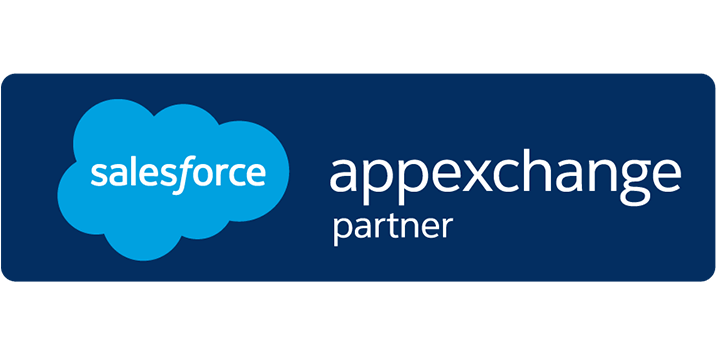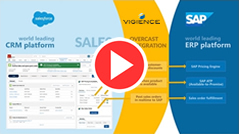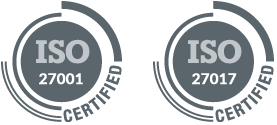Business Process Insights
Salesforce as a Call Center Portal for multiple Systems
Challenges of a call center
Many call centers have the same issue – their agents need to work in multiple systems to successfully help customers, that are calling them. At one of our customers, one of the world’s largest utilities, they operate a call center with 8.000 agents that help their customers with the following:
- Change of contract or payment method
- Inquiries on electricity usage, invoices, basically anything related to electricity
- Change of address, phone number etc.
Data, that is required to fulfill the callers request, is unfortunately not in one single system, but spread across twelve different systems, all with a different user interface:
- Different web-based solutions, running in the browser
- Mainframe software, accessed via a command line interface
- Native desktop applications
This leads to the following challenges:
- Intensive and costly training of new employees on all applications as users need to be trained in many different systems.
- Multiple logins and username/password combinations.
- The same information needs to be entered in more than one system.
- Copy and paste is required to transfer information between applications.
- Call handling time is longer than necessary.
- Unsatisfied customers because of the long handling time.
- Error prone process
To eliminate these problems, our customer was looking for an integrated portal solution that would unite all applications in one user interface.
Options for a call center portal
The customer had the choice between an SAP Fiori based custom solution and the combination of Salesforce and Vigience Overcast. The development of a custom solution against these backend systems was not an option, as this would lead to too much custom code, that needs to be maintained for the years to come. At the end Salesforce and Overcast was selected because:
- Faster implementation time thanks to Overcast and the Overcast Component Builder
- Much less custom code compared to the Fiori/SAP UI5 approach, as Overcast is metadata driven and does only require coding in very specific cases.
- Better usability of Salesforce compared to SAP Fiori
- Lower project risk
The average duration of a call has been reduced by 50%. This means that every call center agent can now make twice as many calls per day than before.
Advantages of a call center portal
With the new Salesforce and Overcast based solution, our utility company has the following advantages:
- Reduced call time – the average duration of a call has been reduced by 50%. This means that every call center agent can now make twice as many calls per day than before.
- With over 8’000 call center agents, more than 80’000 days per months can be saved, which leads to a huge financial saving.
- The reduced waiting and call time leads to higher customer satisfaction, as they don’t need to wait for the agent to search for the answer and enter data across multiple systems and applications.
- Less errors happen, as copy and paste between systems is a thing of the past.
- The training time and cost for new agents have been reduced, leading to further savings.
Implementation of the call center portal
So how did we implement this call center portal on the Salesforce platform? With Overcast it was easy for us to integrate the backend systems into one, user friendly, Salesforce-based portal, that displays all relevant data. When the call comes in, the Salesforce record shows and Overcast retrieves and displays data from all relevant systems in real-time.
Overcast has pre-defined connectors to many different backends (SAP, Microsoft, Oracle and all types of OData, SOAP or REST Web Services, etc.) that make it easy to read and write data from and to these source systems. Overcast allows you to replicate data into Salesforce, but also allows real-time access to data directly in the backend. This has the advantage that complex business processes can be executed in the backend, don’t need to be re-created in Salesforce and that data is always 100% correct and up to date.

With Overcast, all kind of backend systems can be integrated into Salesforce
While other integration platforms stop with the data replication, we go one step further with Overcast – we a) do transactional (business process) integration and b) display backend system data in the Salesforce user interface in real-time (without copying data). In order to display the retrieved backend data, we built the Overcast Component Builder, a native Salesforce application available in the AppExchange. The component builder, a low-code development environment, allows you to create Salesforce Lightning Components without writing code (but if you like, you can write your own components too) that display data from a backend system in real-time. The Overcast Components can contain data from one backend system, from multiple backends or a mix of data from backends and Salesforce. Overcast Components can be placed on Lightning pages in Salesforce, allowing you to turn Salesforce into an optimized portal for many backend systems. If – for example – you have your account data in Salesforce, your sales orders plus invoices in SAP and the assets & open cases in Microsoft Business Central, you can create a portal interface containing all this information on one screen.
With Overcast, the integration of a backend system can be done in three simple steps:

- Establish the connection to the backend system (server information, URL, username, password etc. are required)
- Configure the integration scenario – what do you like to integrate? Customers, products, invoices, deliveries, or something else? What web service, SAP BAPI or OData service needs to be called with which parameters?
- Define how and where the backend data should be displayed within the Overcast Component and Salesforce page layout.
The great thing here is that you can create a portal as described above without writing any code in your backend systems. Overcast works with the standard APIs of these systems, which accelerates the implementation and doesn’t require deep technical knowledge of the backend. Instead of spending years and hundreds or even thousands of person days, Overcast allows you to implement a portal with data from many different systems in weeks.
Conclusion
We think that we found the perfect combination to integrate different systems and business processes into one portal – on the one side Salesforce with its world class usability and flexibility, on the other side Overcast, to integrate any system and data source in a short time. Together the two solutions will give your employees the user experience they deserve and that they need to be fully productive!
If you want to learn more about Vigience Overcast and how we can help you to create the perfect portal for your organization, get in touch with us.
AUTHOR

Alexander Ilg








